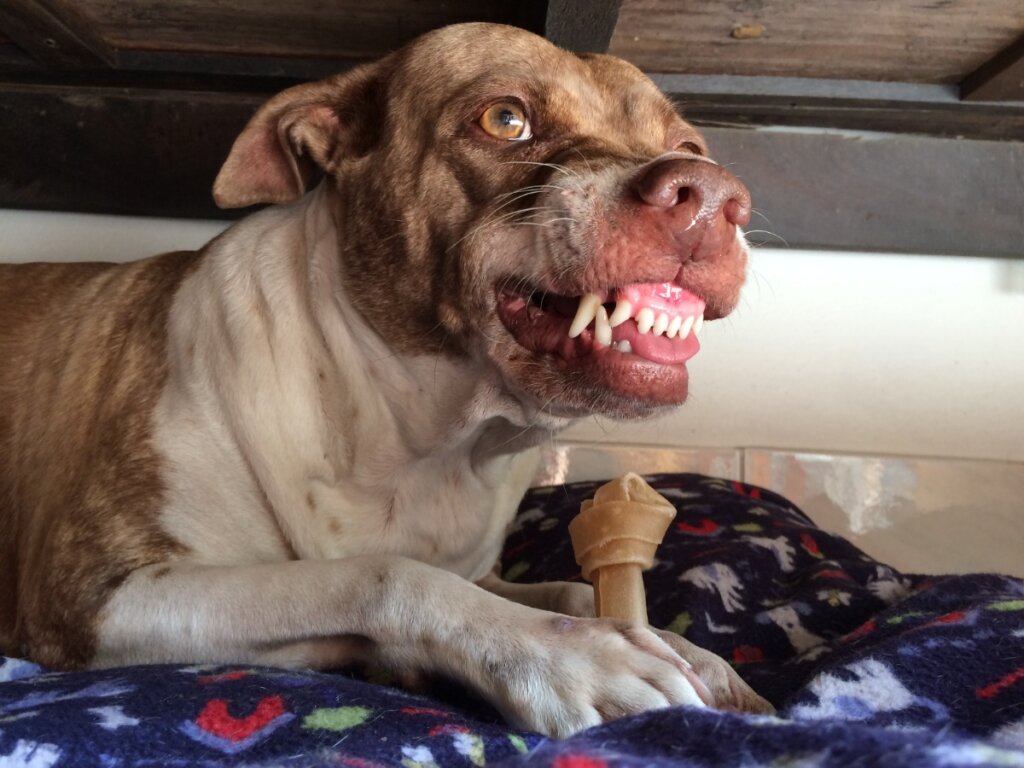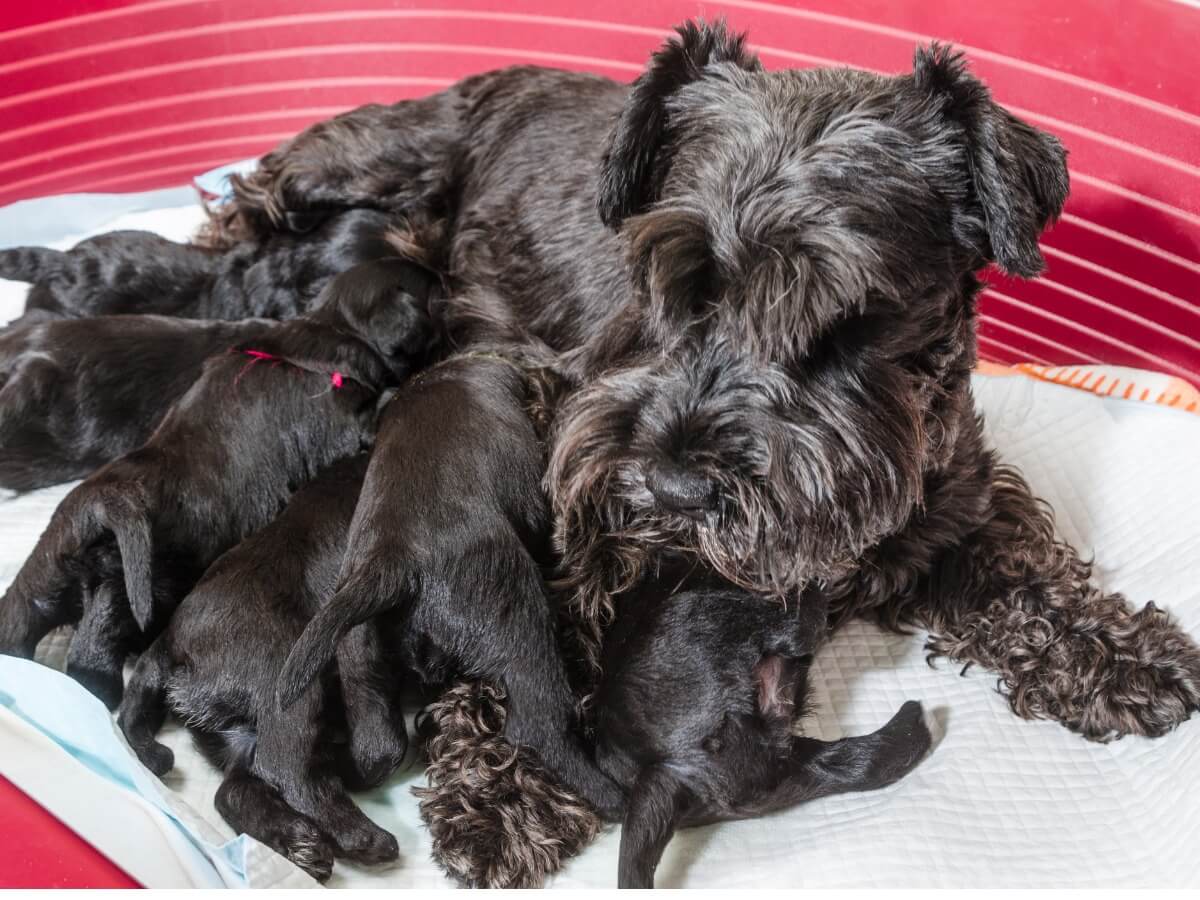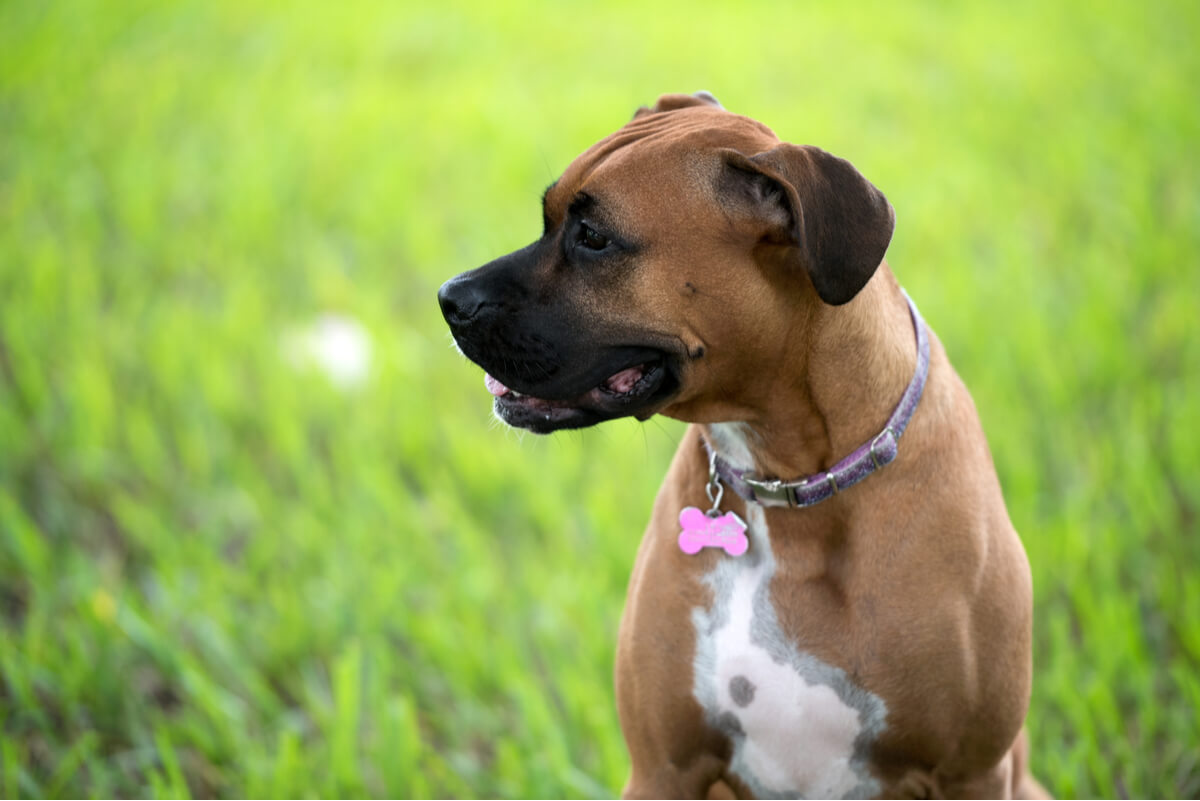Aggressive Dog After Giving Birth: Causes and Solutions

The arrival of puppies at home is as overwhelming as it is joyous. However, the urge to hold these little ones and give them attention can lead to the mother becoming aggressive. Why does this occur, when you don’t want to hurt them and the mother has always trusted me? Find out what to do if you have an aggressive dog after giving birth.
Childbirth isn’t only a special time for the family. The dog goes through a tremendously painful stage and undergoes a series of hormonal changes that modify her behavior. Being aggressive is completely natural, and we humans must adapt to this. Here you can find out how.
Why do I have an aggressive dog after giving birth?
It can be surprising – and even scary – when a usually calm and loving dog becomes aggressive after giving birth. It’s easy to guess that her instinct to protect her puppies can influence this, because her aggressive behavior occurs when someone approaches her.
During pregnancy, the progesterone levels in the female’s blood are high, as it’s the hormone that’s secreted for the gestation process. When it’s time for delivery, a puppy’s pressure against the cervix creates a spike in oxytocin, the hormone responsible for contractions.
At this time, progesterone drops and oxytocin stays high during labor and breastfeeding. In addition to the processes of childbirth and the segregation of milk, this hormone favors the creation of maternal-child bonds, which, in turn, explains the protective behavior of the female with her offspring.

Stress in dogs after childbirth
An aggressive dog after giving birth isn’t only aggressive because of hormonal changes, as she may be under stress. When caring for her newborn puppies, peace of mind is essential for her.
If the female doesn’t feel comfortable in her bed, you’ll see her hide her puppies or move them to another location. It’s also common for her to be restless or aggressive with other members of the family.
Anxiety in an aggressive dog after giving birth
It’s relatively normal to see some sort of anxious behavior in dogs after giving birth, especially if they’re first-time moms. You may hear the mother moaning, shaking, or grooming the pups excessively. Rather than being aggressive, it’s also possible that she’ll look afraid when you approach the litter, but it depends on the dog’s personality.
If she looks insecure when she’s taking care of the puppies, you can help her by reinforcing every grooming action she does with good words and gestures. If, on the other hand, her care is excessive, try to distract her with striking positive stimuli.
On the other hand, if the dog is especially restless and constantly shaking, it may not be anxiety, but a clinical problem – such as eclampsia. In the event of any persistent atypical symptoms, you should take her to the clinic immediately.
What do I do in case of an aggressive dog after giving birth?
The most important thing is to ensure that the dog is calm, especially during the first week after giving birth. To ensure this, you can do the following:
- Don’t touch the puppies beyond what’s strictly necessary.
- Stay away from her birthing area – you and also other people or animals that live in the house.
- Avoid startling the mother. You can talk to her before entering the room, always with a calm voice and approaching slowly.
Postpartum behavior in female dogs
There are other behavior patterns linked to postpartum disorders in dogs. Even though it’s not behaving aggressively, you should be aware of the slightest sign of disease or illness, as it could be a veterinary emergency. Let’s look at some examples.
Lethargic behavior
Some female dogs adapt easily to caring for their offspring and show no signs of stress or anxiety, but too much inactivity can be worrisome. Lethargy differs from tranquility when the mother’s movements are slow and the puppies are neglected.
This lethargy may be due to mastitis – an infection of the breasts – or other diseases. In this case, you should take the animal to the vet, but not before protecting the puppies in a warm, quiet place.
Digging behavior outside the birth area
The mother will try to create a comfortable place for herself and her puppies, so it’s normal to see her mess up her bed, scratch the floor or move blankets. However, when this “digging” behavior occurs outside the birthing area, it may be due to anxiety.
This behavior indicates that the dog doesn’t feel safe where they are, and so she tries to make the birthing area bigger or to move it. She’ll look for a secluded place – cabinets, corners, etc. – and try to take the puppies there. If this happens, find a quieter and safer place for them.
Cannibalistic behavior
This is very difficult behavior to have to witness, and it’s usually because the dog feels that the puppies are putting her and the rest of the litter in danger from possible predators. Before all the offspring or the dog herself die, some mothers display an instinct for cannibalism that allows them to ensure future success in bearing offspring.
Witnessing something like this is really upsetting, but don’t lose your cool. Remove the surviving pups and keep them in a warm, quiet place. Afterwards, put them with their mother for supervised periods to see if she’ll accept them, and, if not, you’ll have to hand-raise them.
If you can get the puppies to suckle during these periods, remember to encourage them to urinate and defecate, as it’s usually the mother who does this when cleaning them.
Feces in the wrong places
The mother will always relieve herself outside the birth area, as she’ll be worrying about keeping the space clean for her puppies. You may even see her eating her own feces. However, after giving birth, she may feel too tired to go out and urinate or defecate elsewhere.
If this behavior extends over time, it may be a sign that something is wrong. The female may feel too insecure about leaving the young alone, or she may even have a urinary tract infection from childbirth.
If this happens, spread pads and other disposable materials around the area, to clean it periodically. If it’s a matter of anxiety, you can reinforce its progress to get out of the birth area, but it’s very important to rule out physical ailments too.

Helping a dog through pregnancy and postpartum is very difficult. Although the best thing for her is always sterilization, you may find yourself having to look after a pregnant dog. Our main advice here will always be to ensure you have a trusted veterinarian to help you every step of the way. Your dog will thank you more than anyone.
All cited sources were thoroughly reviewed by our team to ensure their quality, reliability, currency, and validity. The bibliography of this article was considered reliable and of academic or scientific accuracy.
- Angulo, S. M. (2006). El parto de la perra. Profesión veterinaria, 16(63), 34-38.
- Pinedo, A., & Orderique, L. (2001). Complicaciones maternoperinatales de la preeclampsia-eclampsia. Revista Peruana de Ginecología y Obstetricia, 47(1), 41-46.